Hola amigos de la hermosa comunidad de Hive, Saludos Cordiales. Por acá mi tercer post, en el cual voy a referirme a mi pueblo, origen ancestral, el pueblo de mis padres, Panaquire, uno de los pueblos más emblemáticos de Barlovento, Tierra Ardiente y del Tambor.
Les hablaré de él, ya que como les dije es mi lugar de origen, además de ser un asentamiento afro caracterizado por su importancia histórica, el único pueblo de ésta región donde se gestó un movimiento pre independentista; también con una actividad agrícola por excelencia cacaotera, además de otros rubros, con gran impacto en la región y en el país; por sus conservadas expresiones culturales amén de su alto atractivo turístico.
Siempre que tengo la oportunidad, me refiero a Panaquire para evidenciar la importancia de conocer bien el contexto de donde provenimos y comprender quienes somos, condiciones básicas para definir nuestra identidad, manifestándonos hacia el mismo contexto, con acciones de valoración, preservación, incluso de amor.
- Hello friends of the beautiful community of Hive, Cordial Greetings. Here is my third post, in which I am going to refer to my town, ancestral origin, the town of my parents, Panaquire, one of the most emblematic towns of Barlovento, Tierra Ardiente y del Tambor.
I will tell you about it, since as I told you it is my place of origin, besides being an Afro settlement characterized by its historical importance, the only town in this region where a pre-independence movement took place; also with an agricultural activity par excellence cocoa, in addition to other items, with great impact on the region and the country; for its preserved cultural expressions in addition to its high tourist attraction.
Whenever I have the opportunity, I refer to Panaquire to demonstrate the importance of knowing well the context where we come from and understand who we are, basic conditions to define our identity, manifesting ourselves towards the same context, with actions of valuation, preservation, even love.
Panaquire se encuentra en Barlovento, una subregión geográfica la más oriental del Estado Miranda, Venezuela. Se presenta como una extensa llanura en forma de embudo, limitada por dos sistemas montañosos: la Serranía del Interior, geológicamente la más antigua ubicada al sur y la Cordillera del Litoral Central, ubicada al norte, aún con movimientos diástróficos orogénicos, es geológicamente la más joven. La parte más amplia del embudo se presenta de cara al mar. Por allí penetran al continente los vientos alisios del Noreste, que vienen del océano cargados de agua y al encontrarse con las dos serranías se condensan y se precipitan, razón por la cual Barlovento es una zona de muchas lluvias y a la procedencia de los vientos debe su nombre. En Geografía, las zonas de barlovento significan desde donde provienen los vientos, sotavento significa exactamente lo contrario, hacia donde van los vientos. Debido a que esa llanura aluvional recibe a los vientos alisios, por esta razón también recibe el nombre de la acción geográfica que en ella ocurre: Barlovento.
Por lo antes mencionado el clima que posee en su mayor extensión es Tropical Lluvioso con Vegetación de Bosque y Xerófila en las costas, que permiten que los suelos posean gran fertilidad para la obtención de diversos rubros agrícolas y como mencioné por excelencia el Cacao.
- Panaquire is located in Barlovento, the easternmost geographical sub-region of Miranda State, Venezuela. It appears as an extensive funnel-shaped plain, limited by two mountain systems: the Serranía del Interior, geologically the oldest located to the south and the Cordillera del Litoral Central, located to the north, still with orogenic diastrophic movements, it is geologically the youngest. The widest part of the funnel faces the sea. The northeast trade winds penetrate the continent from there, which come from the ocean loaded with water and when they meet the two mountain ranges, they condense and precipitate, which is why Barlovento is an area of heavy rainfall and the origin of the winds is the reason for its name. In geography, windward areas mean where the winds come from, leeward means exactly the opposite, where the winds go. Due to the fact that this alluvial plain receives the trade winds, for this reason it also receives the name of the geographical action that occurs there: Barlovento.
For the above mentioned the climate that it has in its greater extension is Tropical Rainy with Forest Vegetation and Xerophilous in the coasts, that allow that the grounds possess great fertility for the obtaining of diverse agricultural items and as I mentioned by excellence the Cocoa.
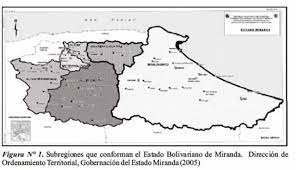
Foto tomada de: Aportes para el estudio y compresión de los aspectos biologicos, fisicos y geograficos del cacao. ve.scielo.org
Fundado en 1736 por Juan Francisco de León y un grupo de Canarios, como pueblo de misión o pueblo de evangelización, siendo su advocación Patronal, La Virgen de la Candelaria. (Roberto Páez, Cultor y Cronista del Pueblo). Algunos le llaman isla, puesto que está rodeado en sus zonas limítrofes por ríos: El Tuy, Cuira, Panaquirito, La Cumaca, Chorros de Urba, entre otras quebradas y riachuelos ya que se encuentra en plena zona montañosa y en tiempos de fuertes lluvias los ríos crecen y se desbordan, inundando todo el pueblo excepto la parte central. Estas condiciones hacen del pueblo un atractivo turístico en la actualidad, incluso para montañistas y practicantes de deportes extremos.
Founded in 1736 by Juan Francisco de León and a group of Canary Islanders, as a mission town or town of evangelization, being its patron saint, La Virgen de la Candelaria. (Roberto Páez, Cultor y Cronista del Pueblo). Some call it an island, since it is surrounded in its bordering areas by rivers: El Tuy, Cuira, Panaquirito, La Cumaca, Chorros de Urba, among other streams and creeks because it is located in the mountainous area and in times of heavy rains the rivers rise and overflow, flooding the entire town except the central part. These conditions make the town a tourist attraction today, even for mountaineers and extreme sports enthusiasts.
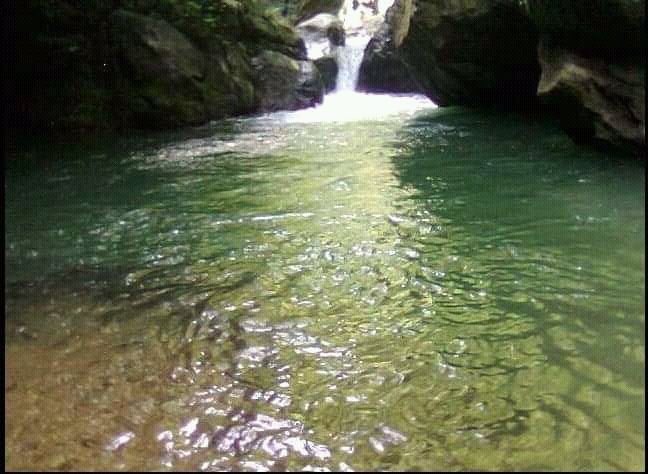
Foto tomada por mi colega Olivia Guevara.
Al pueblo se entra y sale a través de ríos, por lo cual se caracteriza como conservador, tanto en costumbres como en cultura por su limitado acceso. Sólo en tiempo reciente, tomando en cuenta su fecha de fundación, específicamente en el gobierno de Rafael Caldera en 1973 se inauguró el puente vial para pasar el Tuy, entrar y salir con vehículos. Antes de este momento el acceso se realizaba por canoas y en el mejor de los casos, a pie por el puente colgante, cuya base de tránsito era con tablones de madera. Atravesar el puente colgante para los habitantes permanentes era algo común; para quienes visitábamos el pueblo en días festivos o vacacionales era un gran martirio, sentir desde inicio a fin el tambolear del puente y el crujir de las tablas, mientras lo atravesaban numerosas personas y además, ver que muy por debajo se encontraba el caudaloso río Tuy, hacía que el tránsito realmente resultara interminable. Hoy por hoy, quienes lo hicimos en cualquier forma, consideramos a nuestro puente colgante un Patrimonio, puente artesanal, único en su estilo creado durante la dictadura del Gral. Marcos Pérez Jiménez a finales de los años 50. Corresponde a las instancias gubernamentales de turno y a los intereses colectivos de la población, preservarlo.
- The town is entered and exited through rivers, which is why it is characterized as conservative, both in customs and culture due to its limited access. Only in recent times, taking into account its founding date, specifically in the government of Rafael Caldera in 1973, the road bridge was inaugurated to cross the Tuy, to enter and leave with vehicles. Before that time, access was by canoes and, in the best of cases, on foot over the suspension bridge, whose transit base was made of wooden planks. Crossing the suspension bridge for the permanent inhabitants was something common; for those of us who visited the town on holidays or vacations, it was a great martyrdom, to feel from beginning to end the shaking of the bridge and the creaking of the planks, while many people crossed it and also, to see that far below was the mighty Tuy River, made the transit really endless. Today, those of us who did it in any way, consider our suspension bridge a Heritage, a handmade bridge, unique in its style, created during the dictatorship of General Marcos Pérez Jiménez at the end of the 50's. It is up to the governmental authorities and the collective interests of the population to preserve it.
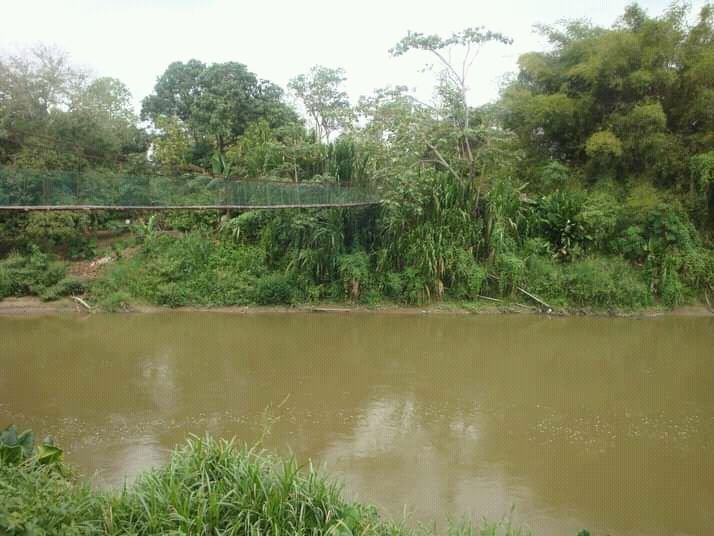
Panorama del Puente colgante de Panaquire y del Río Tuy, vista desde el Puente Vial, foto tomada por mi en el 2019
En el pueblo, que mantiene aún matices de la africanidad, nacieron mis padres en la segunda década del siglo XX. De acuerdo a la historia local de la época por ellos “narrada”, Panaquire con hermosas casas de bahareque recubiertas de hormigón, de altos techos protegidos de caña amarga, amplios ventanales con sentaderas interiores incorporadas, todas construidas en dos calles principales alrededor del centro donde estaba y está La Plaza ahora Bolívar, la Prefectura, la Iglesia, La Medicatura, La Botica. Y el resto de casas pertenecientes a los dueños de haciendas o “grandes cacaos”, las calles eran de tierra. El día transcurría rápidamente con mucha actividad, debido a que todas las faenas debían procurarlas con la luz del día, ya que no había electricidad. La larga noche iniciaba a las seis de la tarde o con la puesta del sol, en procura de luz, eran usadas las lámparas de kerosene tanto en las casas como en las calles.
- My parents were born in the town, which still maintains African nuances, in the second decade of the twentieth century. According to the local history of the time "narrated" by them, Panaquire with beautiful houses of bahareque covered with concrete, with high roofs protected by bitter cane, large windows with interior seats incorporated, all built in two main streets around the center where was and is now La Plaza Bolivar, the Prefecture, the Church, La Medicatura, La Botica. The rest of the houses belonged to the hacienda owners or "grandes cacaos", the streets were dirt. The day passed quickly with a lot of activity, because all the work had to be done by daylight, since there was no electricity. The long night began at six o'clock in the afternoon or at sunset, and kerosene lamps were used both in the houses and in the streets to provide light.

Plaza de Panaquire en la actualidad, Foto tomada por mi colega y amigo, Jesúa Carrillo en el año 2019.
Como asentamiento cacaotero, las jornadas diarias de hombres y mujeres se circunscribían a ello y a otros productos agrícolas. Las mujeres que no se dedicaban a “secar” cacao, se dedicaban a manualidades como tejer, bordar, coser siendo éste último el oficio de mi abuela y tía materna, consecuentemente mi madre, nacida en el pueblo. Eran las modistas del pueblo. Por su parte mi padre, nació en el Blanquillo unas montañas cercanas, ya que mi abuela acostumbraba a acompañar a mi abuelo a sus jornadas en el conuco y debido a la distancia, pernoctaban. Precisamente en una de esas pernoctas, se presenta el trabajo de parto a mi abuela, y debió ser atendida por una partera de las cercanías y “bajar” de las montañas una vez restablecida. En su infancia mi padre atendió labores agrícolas pero entrando a la juventud, comenzó a interesarse mucho por aprender actividades distintas al trabajo agrícola, comenzó en el expendio de medicinas o botica por mucho tiempo, apoyando en lo que le instruían al sector salud en el pueblo, que al igual de otros sectores sociales, era precario.
- As a cocoa settlement, the daily work of men and women was limited to cocoa and other agricultural products. Women who were not dedicated to "dry" cocoa, were dedicated to crafts such as weaving, embroidery, sewing, the latter being the trade of my grandmother and maternal aunt, consequently my mother, born in the village. They were the dressmakers of the town. My father, on the other hand, was born in Blanquillo, in the nearby mountains, since my grandmother used to accompany my grandfather to his days in the conuco and due to the distance, they spent the night there. Precisely in one of those overnight stays, my grandmother went into labor, and had to be attended by a midwife nearby and "come down" from the mountains once she was recovered. In his childhood, my father worked in agriculture, but when he became a young man, he began to be interested in learning everything that was not agricultural work. He began to work in the medicine store or pharmacy for a long time, supporting the health sector in the town, which, like other social sectors, was precarious.
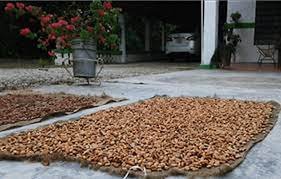
Foto de gremio/dowload scieresearchagate.net
La Educación se impartía en una escuelita, de una sola aula, con solo una maestra, quien generalmente atendía en su casa a varios niños de distintas edades y niveles, obteniendo como última promoción el sexto grado. Luego ellos seguían las faenas de sus padres y madres. El sector salud, no estaba en mejores condiciones, existía la medicatura, la cual funcionaba sólo cuando asistía el médico de la región y esto ocurría solo en determinados días, porque el resto visitaba otras comunidades. En su defecto, las personas eran atendidas por curanderos y plantas ancestrales medicinales, muchas veces en contra de la prescripción científica, pero ante la escases o la ausencia, las personas acudía a ellos.
En una de esas tertulias vespertinas, le pregunte a mi madre de qué murió mi abuela a lo que ella me respondió, de “mengua”. Me comentó las personas morían temprano, mi abuela murió de 34 años, entendí posteriormente que la expectativa de vida era muy corta, algo comprensible si evaluamos las condiciones de insalubridad que podían existir, añadido a la existencia circundante de tantos ríos y montañas, que podrían ser caldo de cultivo de enfermedades endémicas, desconocidas para la época. Las personas ya enfermas tenían mucha dificultad para salir del pueblo, recordemos el puente colgante se construyó en los años cincuenta, para cuando mi abuela Zaragoza enfermó, el acceso era solo por trochas y atravesando ríos. Morir de mengua, era morir de cualquier cosa o de nada, como decía ella, lo cierto es que la causa era desconocida y en las condiciones descritas, difícilmente atendidas.
- Education was provided in a small one-room school with only one teacher, who generally attended several children of different ages and levels at home, with the last promotion being the sixth grade. Then they followed the work of their fathers and mothers. The health sector was not in better conditions, there was a medical office, which only functioned when the doctor of the region attended and this happened only on certain days, because the rest visited other communities. Failing that, people were attended by healers and medicinal ancestral plants, many times against scientific prescription, but in the face of scarcity or absence, people went to them.
In one of those evening gatherings, I asked my mother what my grandmother died of, to which she replied, "mengua". She told me that people died early, my grandmother died at the age of 34, I later understood that life expectancy was very short, something understandable if we evaluate the unhealthy conditions that could exist, added to the surrounding existence of so many rivers and mountains, which could be a breeding ground for endemic diseases, unknown at the time. People who were already sick had great difficulty leaving the village, remember that the suspension bridge was built before the fifties, and by the time my grandmother Zaragoza got sick, access was only by trails and crossing rivers. To die of hunger was to die of anything or nothing, as she used to say, but the cause was unknown and in the conditions described, it was difficult to attend to.
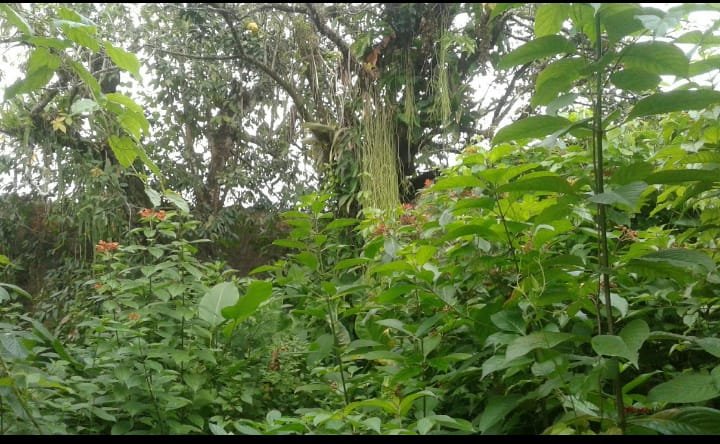
Foto tomada por mi en el fondo de la Casa de Panaquire
Mi madre queda huérfana a los doce años, siendo hija única sin padre responsabilizado, quedó bajo la tutela de mi tía Chucha, a quien vimos como abuela. Ya entrada en la adolescencia mis padres comienzan a tener cercanía, especialmente en las misas. Las señoritas de las familias sólo salían de sus casas acompañadas los domingos a la Iglesia. O por lo menos fue el patrón familiar de mi mama. En esos espacios mi padre comenzó su cortejo amoroso.
- My mother was orphaned at the age of twelve, being an only child without a responsible father, she was left under the guardianship of my aunt Chucha, whom we saw as a grandmother. As a teenager, my parents began to be close to me, especially at mass. The young ladies of the families only left their homes accompanied on Sundays to church. Or at least that was my mother's family pattern. In those spaces my father began his amorous courtship.
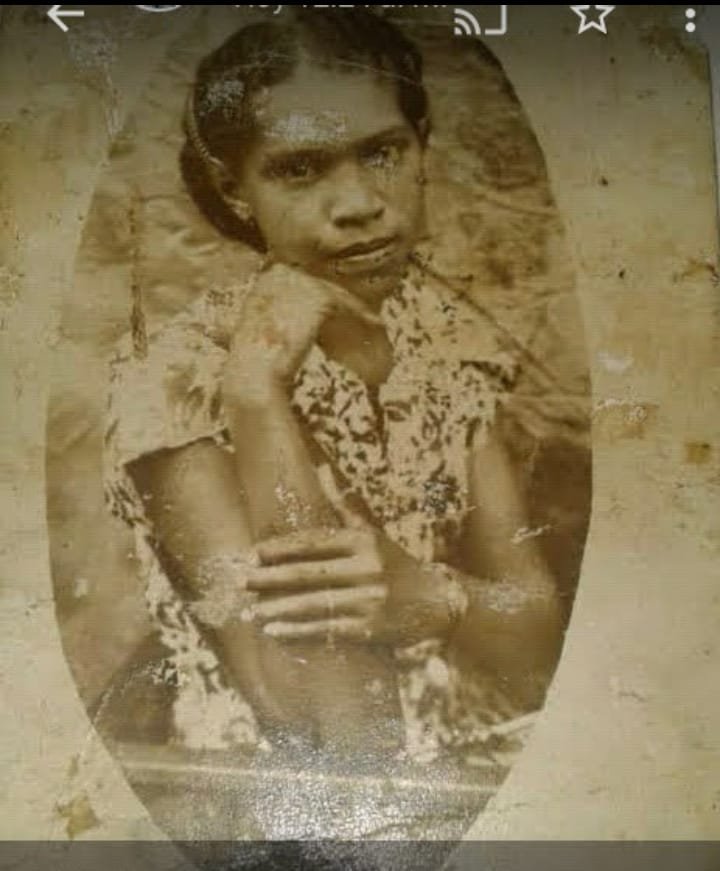
Foto de mi Madre señorita en Panaquire.
Al pedir la mano de mi madre Carmen Daría a mi tía Chucha, mi padre Aníbal Benito debió cumplir con todo el protocolo respectivo y sujetarse al régimen de visitas establecido: tres días a la semana durante dos horas, pero NO dentro de la casa, no. Mi tía le sacaba un banquillo a mi padre a la hora y día convenidos poniéndolo en la parte exterior del ventanal de la casa; mi madre se sentaba en las sentadillas incorporadas de los ventanales, en el interior de la misma.
- When asking for my mother Carmen Daría's hand in marriage to my aunt Chucha, my father Aníbal Benito had to comply with all the respective protocol and to be subject to the established visiting regime: three days a week for two hours, but NOT inside the house, no. My aunt would take out a stool for my father at the agreed time and day, placing it outside the window of the house. My aunt would take a stool to my father at the agreed time and day, placing it on the outside of the window of the house; my mother would sit on the built-in squats of the windows, inside the house.
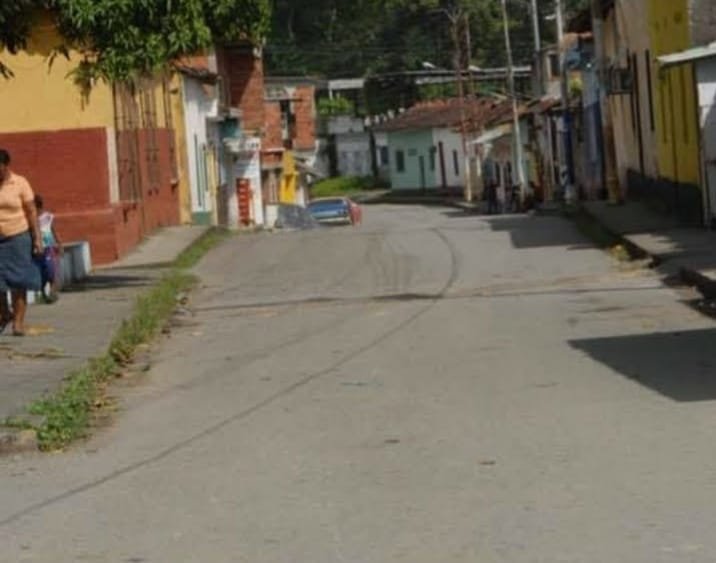
Foto de la Calle Real de Panaquire, Foto tomada por Jesús Carrillo.
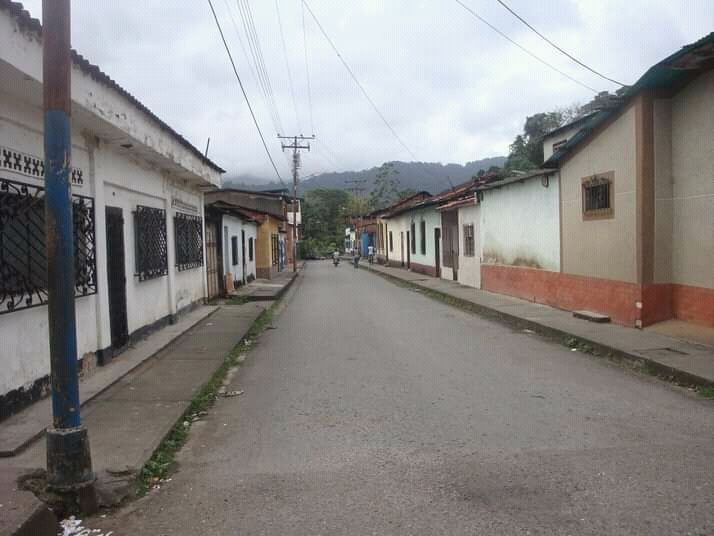
Foto de la Calle Ave Maria de Panaquire tomada por mi, la primera casa a mano izquierda, es nuestra casa restaurada.
Transcurrían esas visitas en cortos momentos románticos y de hermosos idilios, a saber por el contenido de las cartas entregadas por mi padre a mi madre y que ella atesoró toda su vida, hasta que se concretaron en matrimonio. Mi madre de 19 años, mi padre de 23 un 25 de Octubre del 48, se juran fidelidad y amor eterno frente al Altar y la Virgen de la Candelaria, en la Iglesia de Panaquire, un matrimonio que felizmente duró casi sesenta años, hasta que cada uno alcanzó su sueño eterno.
- These visits took place in short romantic moments and beautiful idylls, to know by the content of the letters given by my father to my mother and that she treasured all her life, until they materialized in marriage. My mother, 19 years old, and my father, 23 years old, on October 25, 1948, swore to each other fidelity and eternal love in front of the Altar and the Virgin of Candelaria, in the Church of Panaquire, a marriage that happily lasted almost sixty years, until each one reached their eternal dream.
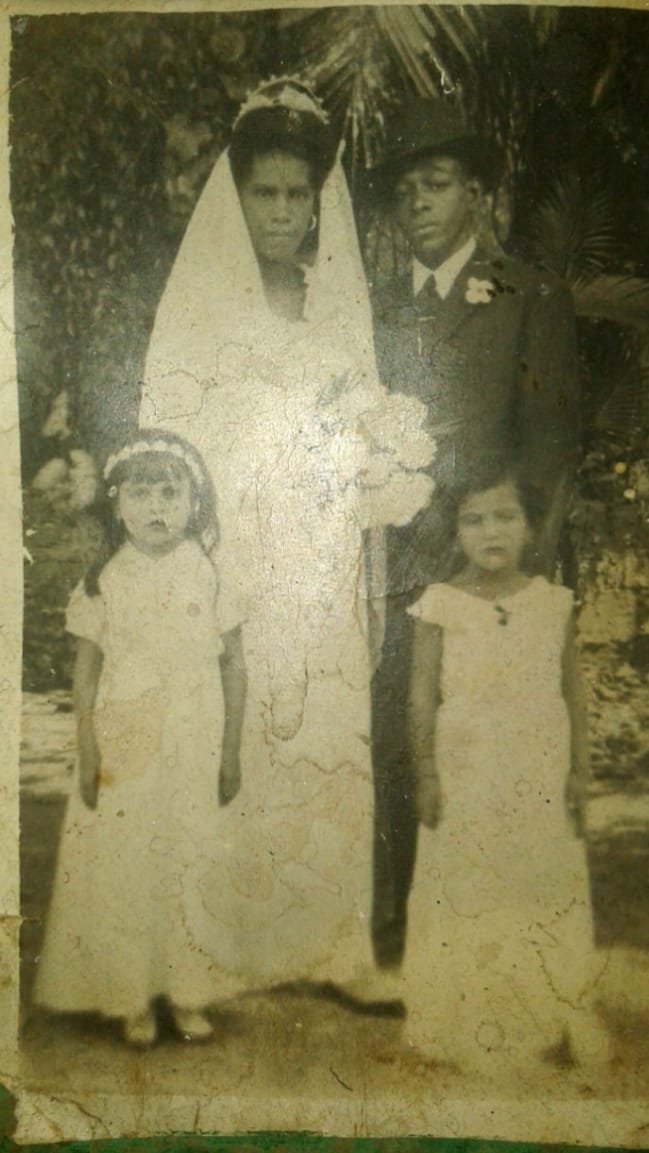
Foto del Matrimonio de mis Padres 25-10-48.
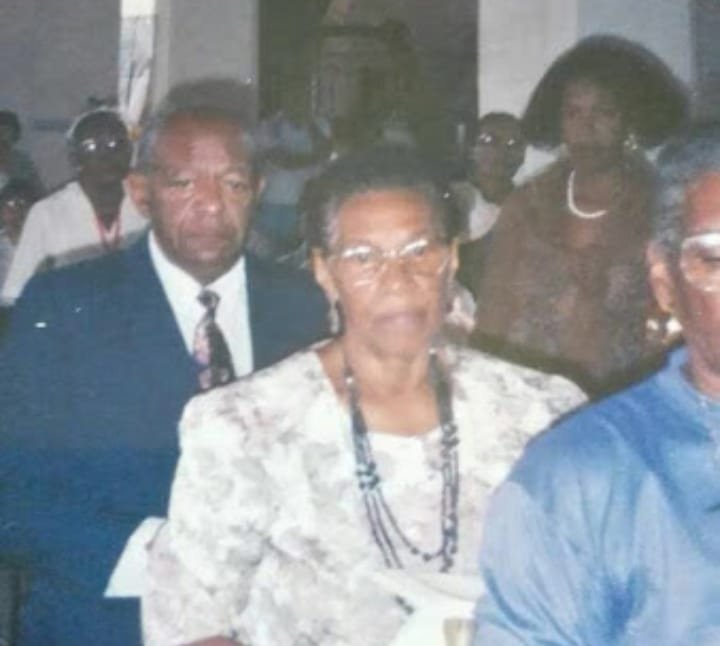
Celebración de la Boda de Oro de mis padres, Iglesia de Panaquire.
Toda esta suerte de relatos y remembranzas las realizo puesto que considero una manera detallada y bonita para demostrar la forma usada por afrodescendientes para transmitir su cultura, sus vivencias, sus valores. La oralidad era, aún lo es cuando se cuenta con el respeto de la palabra, una fuente de información casi fidedigna, usada cuando no se tienen registros escritos o fotográficos. A la prueba está que de los momentos mozos de mis padres, prácticamente no existen fotos, sino a partir de la entrada del urbanismo al campo mediante los puentes.
Así como lo hicieron mis padres, lo hicieron todas las generaciones anteriores y el contenido, el legado perduraba en el tiempo generación tras generación. El acervo y las prácticas culturales en Panaquire no escapan de ello, debido a lo cual, sus manifestaciones se presentan muy enraizadas a la africanidad. El aislamiento geográfico determinó hasta ahora incluso, la preservación de las raíces en varios sentidos: la cafunga, la chicha de arroz, el sancocho de corroncho, las bolas de cacao, plantas medicinales, bebidas alcohólicas artesanales y afrodisíacas interactúan con el transitar de hombres y mujeres con machete en mano y bolsas o canastos de cacao en la cabeza, las semillas de cacao expuestas en las puertas de las casas para secarlas y venderlas, siendo esta específicamente una economía de subsistencia generalmente para mujeres jefas de familia
De igual manera se preservaron las expresiones culturales, entre las más significativas e importantes en el pueblo, así como en la mayoría de los asentamientos afrodescendientes y como resultado del paralelismo cultural, se encuentra El Velorio de Cruz de Mayo de origen cristiano pero asimilado por los afros debido a la aculturación, cuando cada 3 de mayo se le rinde tributo a la Cruz vestida de coloridas flores y con muchos frutos como ofrendas, en señal de bienvenida a períodos de bonanza, se les cantan décimas y tocan fulías, en un ambiente de profundo respeto.
All this kind of stories and remembrances are made because I consider them a detailed and beautiful way to demonstrate the way used by Afro-descendants to transmit their culture, their experiences, their values. Orality was, and still is when we have the respect of the word, an almost reliable source of information, used when there are no written or photographic records. The proof is that there are practically no photos of my parents' younger years, but only from the time of the entry of urbanism into the countryside by means of bridges.
As my parents did, so did all the previous generations and the content, the legacy lasted in time generation after generation. The cultural heritage and practices in Panaquire do not escape from this, because of which, its manifestations are very rooted in Africanness. The geographic isolation has even determined the preservation of the roots in several ways: the cafunga, the rice chicha, the sancocho de corroncho, the cocoa balls, medicinal plants, handmade alcoholic and aphrodisiac drinks interact with the passage of men and women with machete in hand and bags or baskets of cocoa on their heads, the cocoa seeds exposed on the doors of the houses to dry them and sell them, being this specifically a subsistence economy generally for women heads of household.Likewise, cultural expressions were preserved, among the most significant and important in the town, as well as in most of the Afro-descendant settlements and as a result of cultural parallelism, is the Velorio de Cruz de Mayo of Christian origin but assimilated by the Afros due to acculturation, when every May 3rd tribute is paid to the Cross dressed in colorful flowers and with many fruits as offerings, as a sign of welcome to periods of bonanza, tenths are sung and fulias are played, in an atmosphere of deep respect.
También es una expresión heredada y profundamente enraizada, el toque de quitiplas, ritmo e instrumentación africana elaborada con bambú.
It is also an inherited and deeply rooted expression, the playing of quitiplas, rhythm and African instrumentation made with bamboo.

Foto tomada por el amigo Cultor, cronista de Panaquire Roberto Paez. Toque de Quitipla.
Y en esencia también es un pueblo San Juanero, como muchos pueblos afrodescendientes con el repique del mina y los tambores cada 23, 24, 25 de junio, solsticio de verano. Manifestación cultural derivada de la tradición colonial, cuando los amos daban esos días libres a sus esclavizados como festejo en retribución por las cosechas recogidas. En esos días se realizan todo tipo de peticiones a San Juan Bautista, el Santo de los negros, religiosidad derivada del cristianismo y sincretizada con la africanidad: En Curiepe lo llaman San Juan Congo, pero otros de acuerdo a la religiosidad ancestral, la Regla de Osha, afirman que San Juan se mimetiza con la Deidad Oggun, quien representa la fuerza, la intensidad en el trabajo, manejo del hierro y herramientas, machetes, hachas, yunque. Es el orisha de las guerras, sublevaciones, acompaña y vigila su desarrollo a quien lo evoca, entendiéndose por guerra cualquier situación conflictiva que se deba afrontar. Es la identificación de la vida consuetudinaria del otrora africano esclavizado y es representado por la figura de un hombre afro fuerte, musculoso, ataviado con vestimentas de elementos extraídos de la naturaleza y armado con todo instrumento de trabajo forjado en hierro.
- And in essence it is also a San Juanero town, like many Afro-descendant towns with the ringing of the mina and drums every June 23, 24, 25, summer solstice. Cultural manifestation derived from the colonial tradition, when the masters gave those days off to their slaves as a celebration in retribution for the harvests harvested. On those days all kinds of petitions are made to San Juan Bautista, the Saint of the blacks, a religiosity derived from Christianity and syncretized with Africanity: some call him San Juan Congo, and according to the ancestral religiosity, the Rule of Osha, San Juan mimics the Deity Oggun, who represents strength, intensity in work, handling of iron and tools, machetes, axes, anvil. He is the orisha of wars, uprisings, accompanies and watches over the development of those who evoke him, understanding war as any conflictive situation that must be faced. It is the identification of the customary life of the once enslaved African and is represented by the figure of a strong, muscular Afro man, dressed in clothes made of elements extracted from nature and armed with every working tool forged in iron.
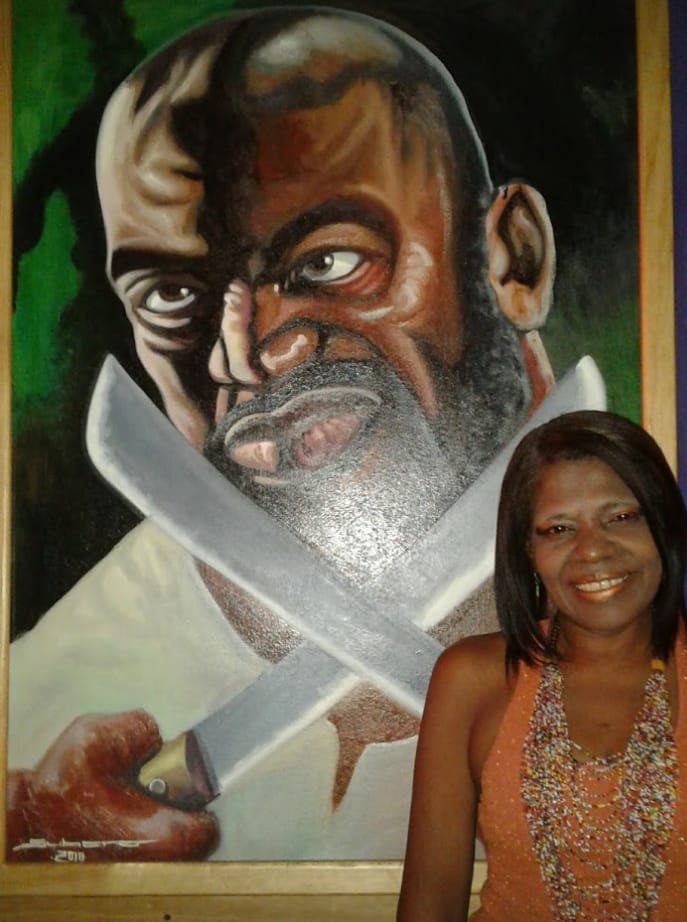
Foto tomada por mi sobrino en concieto de mi hermano Pibo Márquez.
Por ellos se atribuye que San Juan sea el máximo representante de bonanza para los afrodescendientes: “Si San Juan lo Tiene, San Juan Te Lo Da”, toda suerte de peticiones, rituales, conjuros, sortilegios acompañan a la celebración. La exaltación y el frenesí del repique y toque de los tambores, evocan la fuerza del trabajo, la fuerza de enfrentarse a toda situación problemática, la cadencia del baile del hombre cortejando a la mujer en el sentido dirigido por las letras de los cantos de alabanza y de actividades cotidianas, se sumergen en el repique de los Tambores, de la Curbeta y del Taquiti Taqui sobre la Mina.
- Because of them, San Juan is attributed to be the maximum representative of bonanza for the Afro-descendants: "Si San Juan lo Tiene, San Juan Te Lo Da", all sorts of petitions, rituals, incantations, spells, spells accompany the celebration. The exaltation and the frenzy of the pealing and beating of the drums, evoke the strength of work, the strength to face any problematic situation, the cadence of the dance of the man courting the woman in the sense directed by the lyrics of the songs of praise and daily activities, are immersed in the pealing of the drums, the Curbeta and the Taquiti Taqui on the Mine.
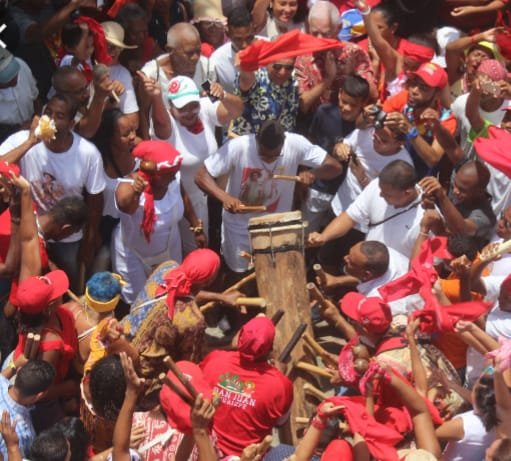
Foto de las Fiestas a San Juan Bautista en Barlovento.
Gracias por leerme, me pueden seguir por instagram como: @mmaquez65, Facebook: @milenimarquez, twitter: @maryori20580809
Thank you for reading me, you can follow me on instagram as: @mmaquez65, Facebook: @milenimarquez, twitter: @maryori20580809